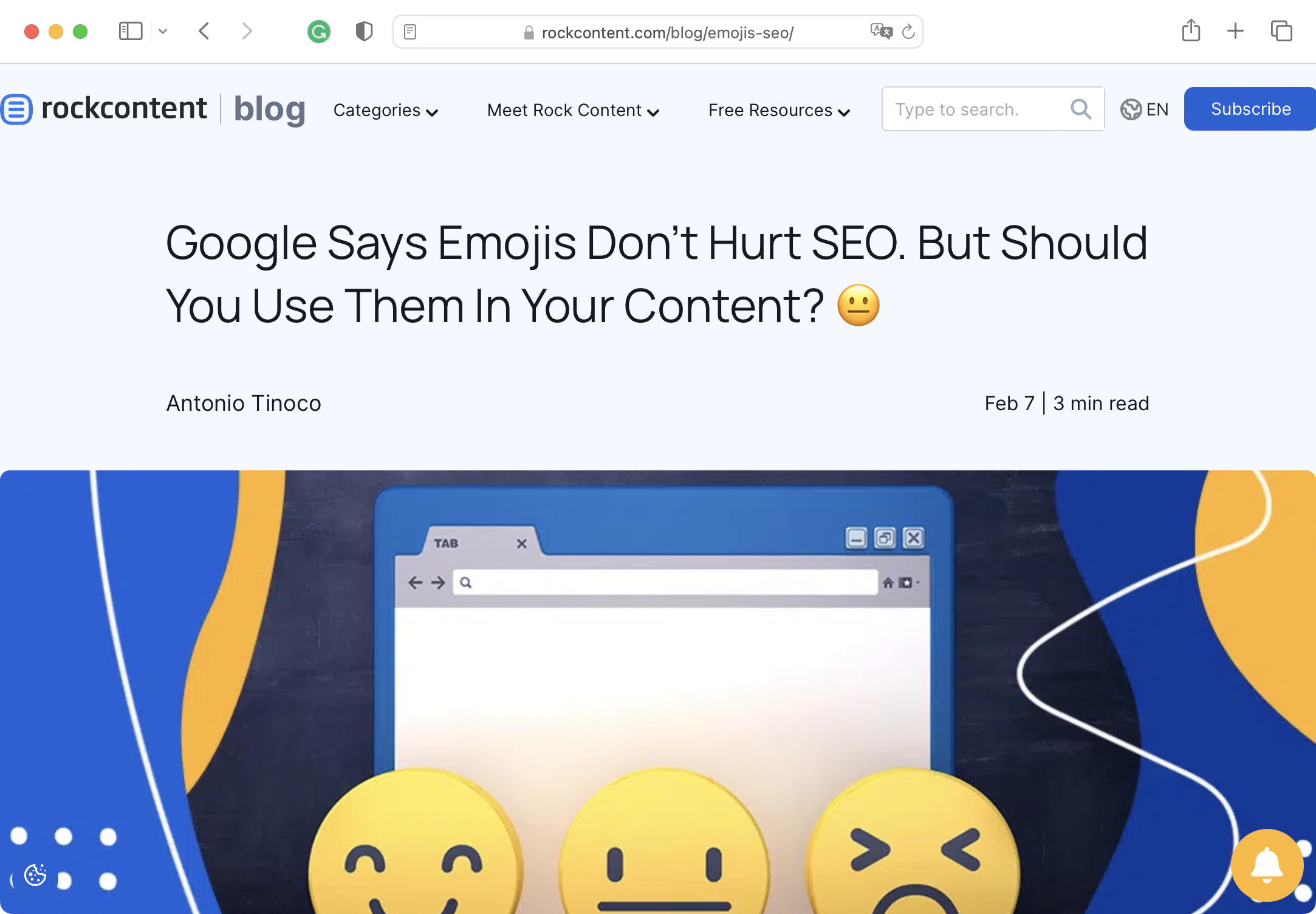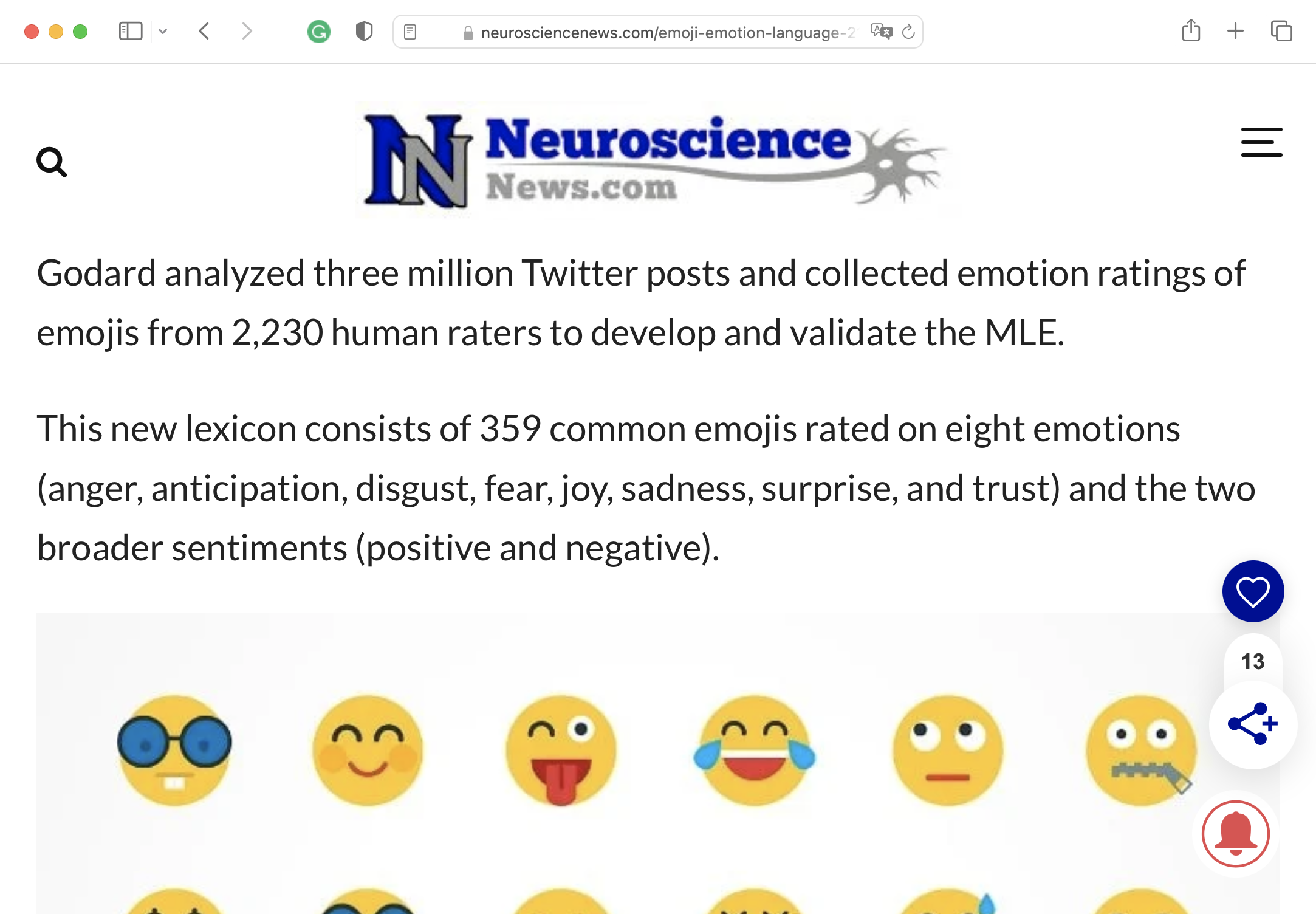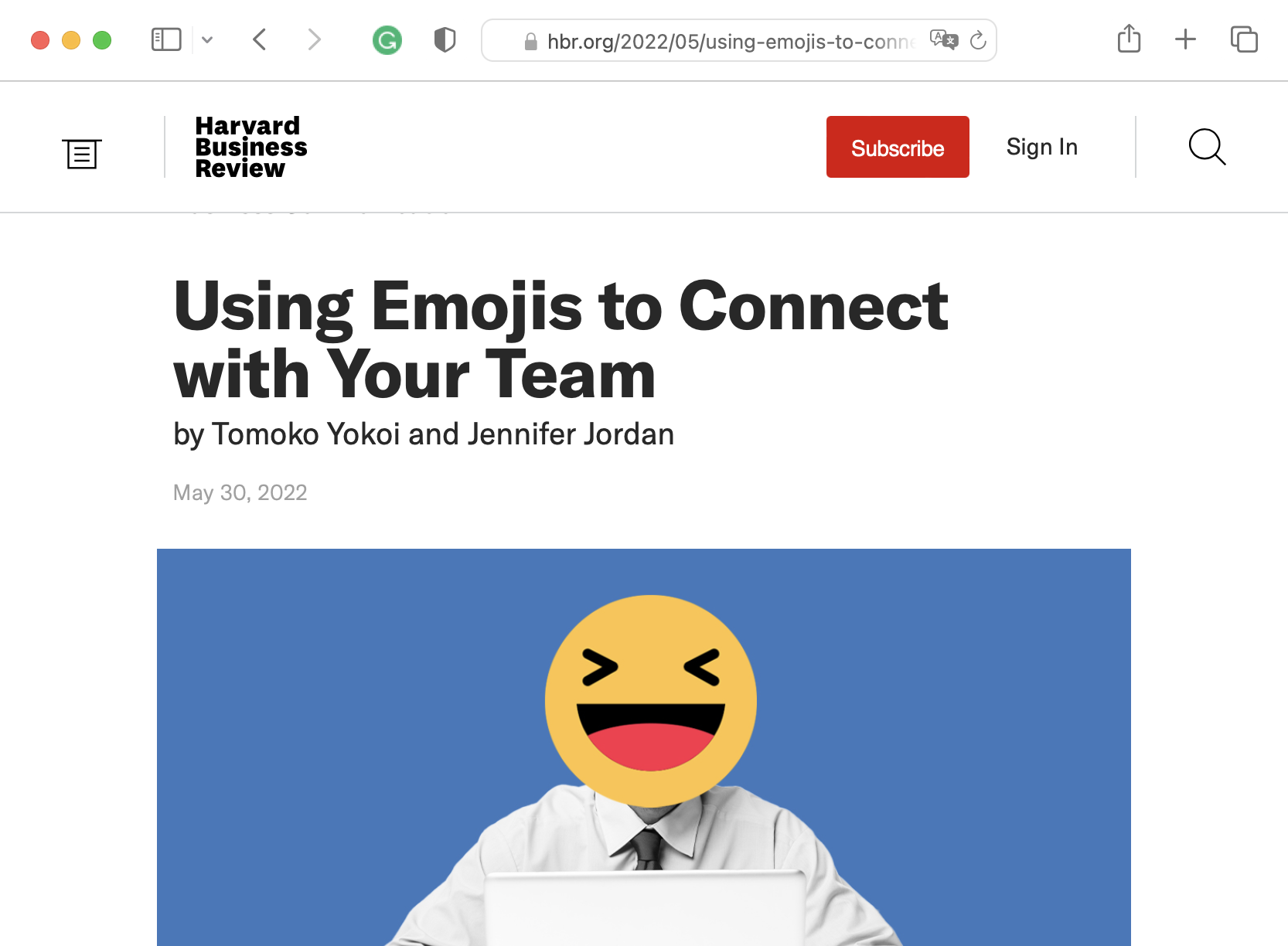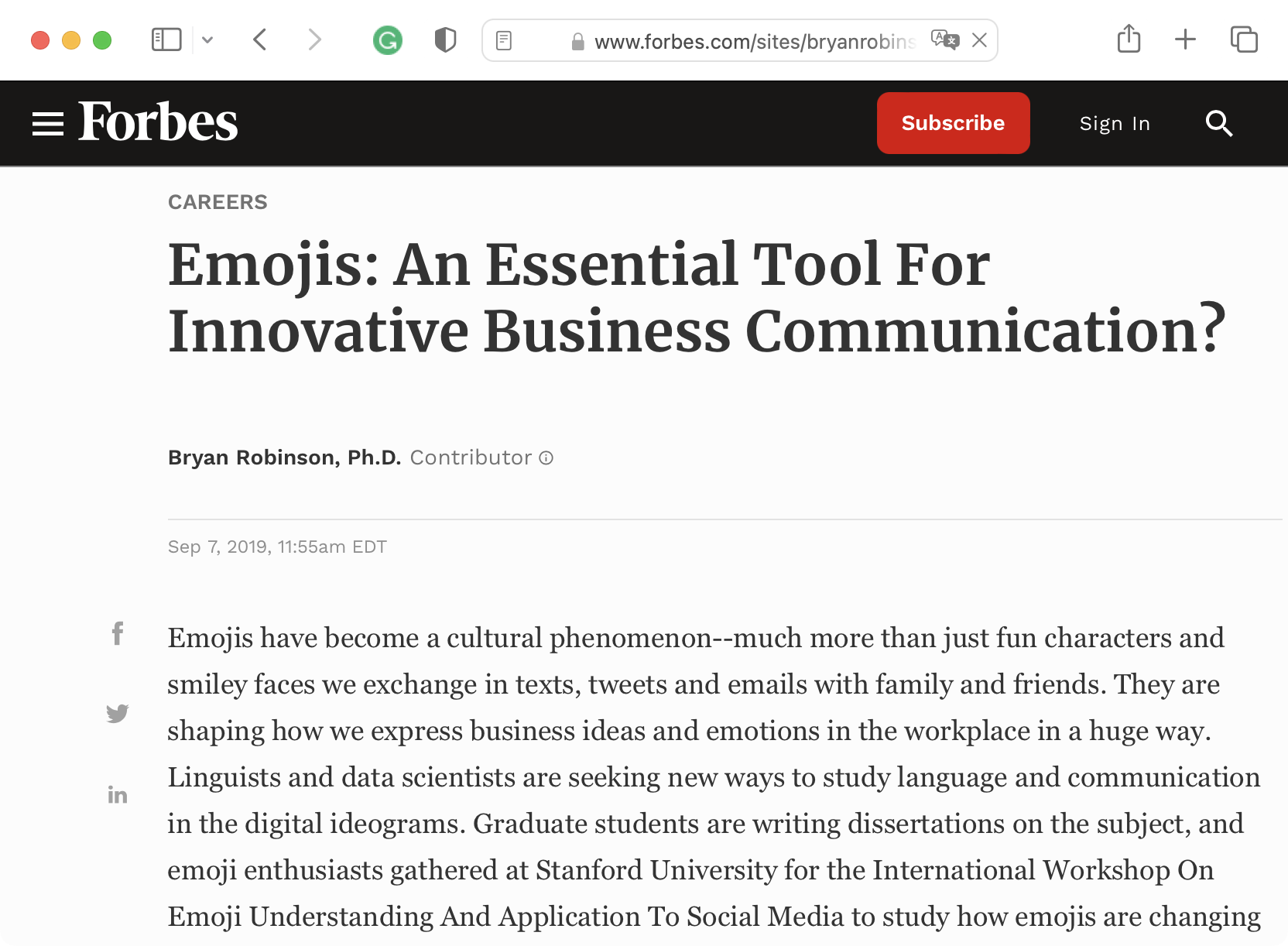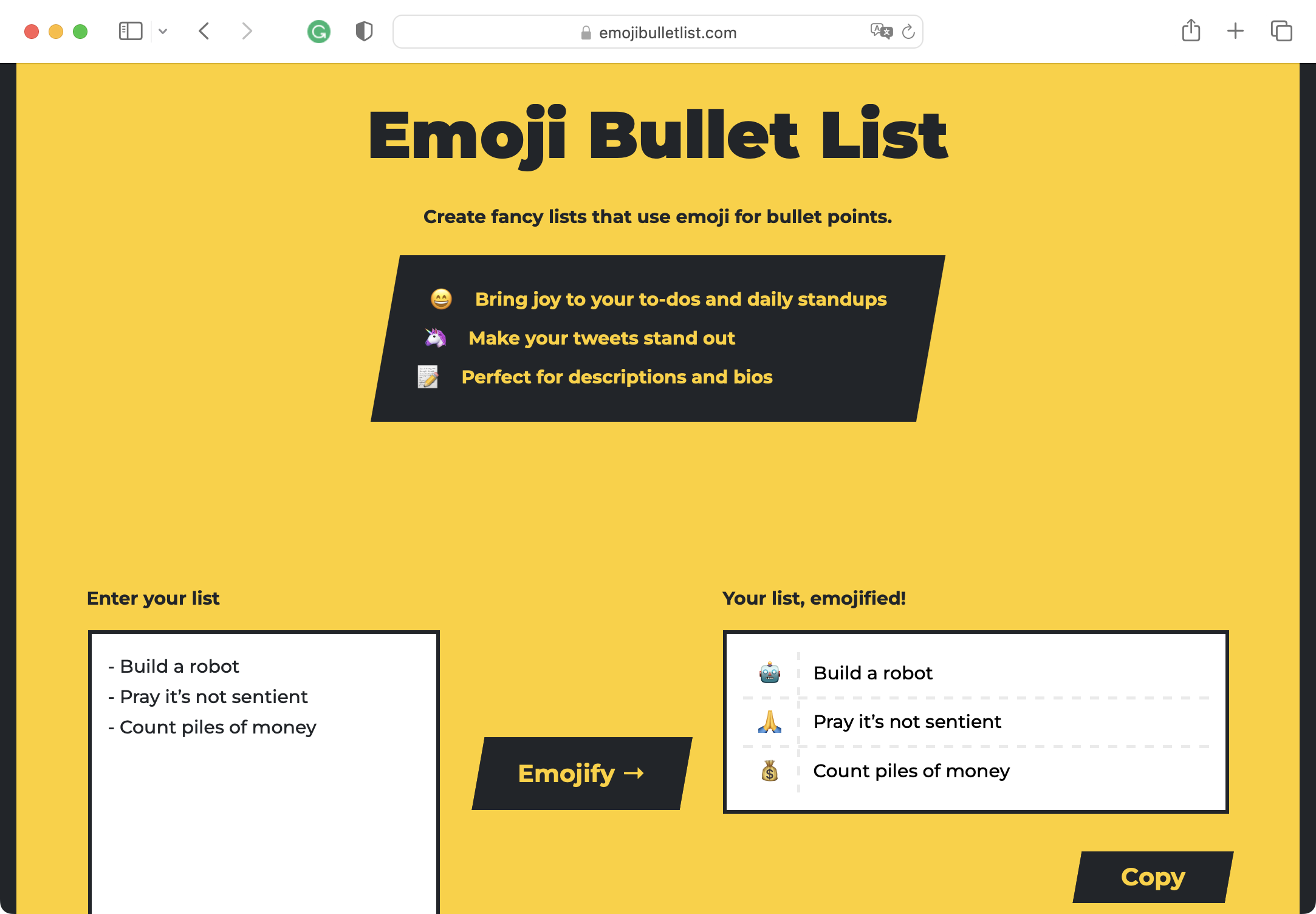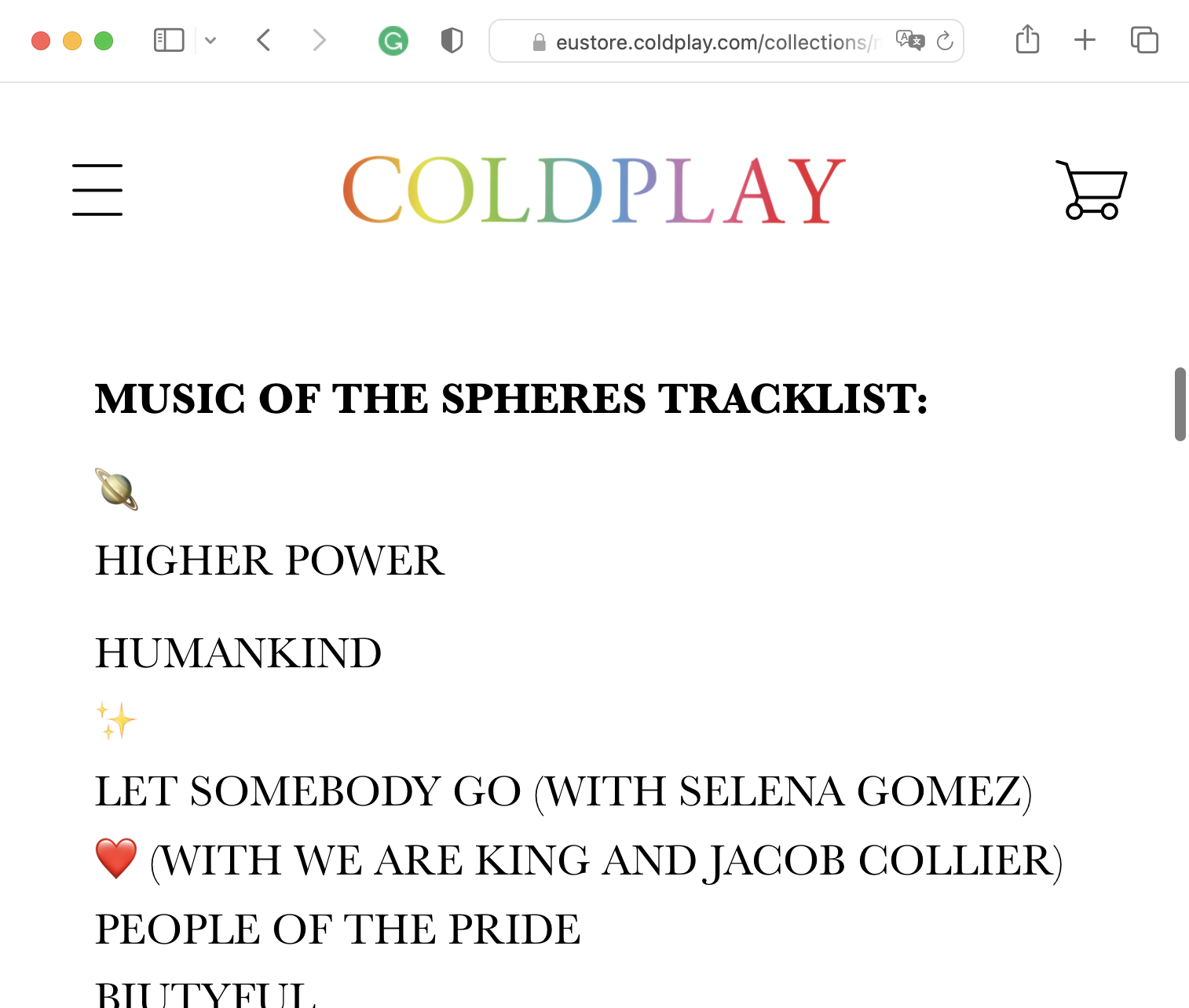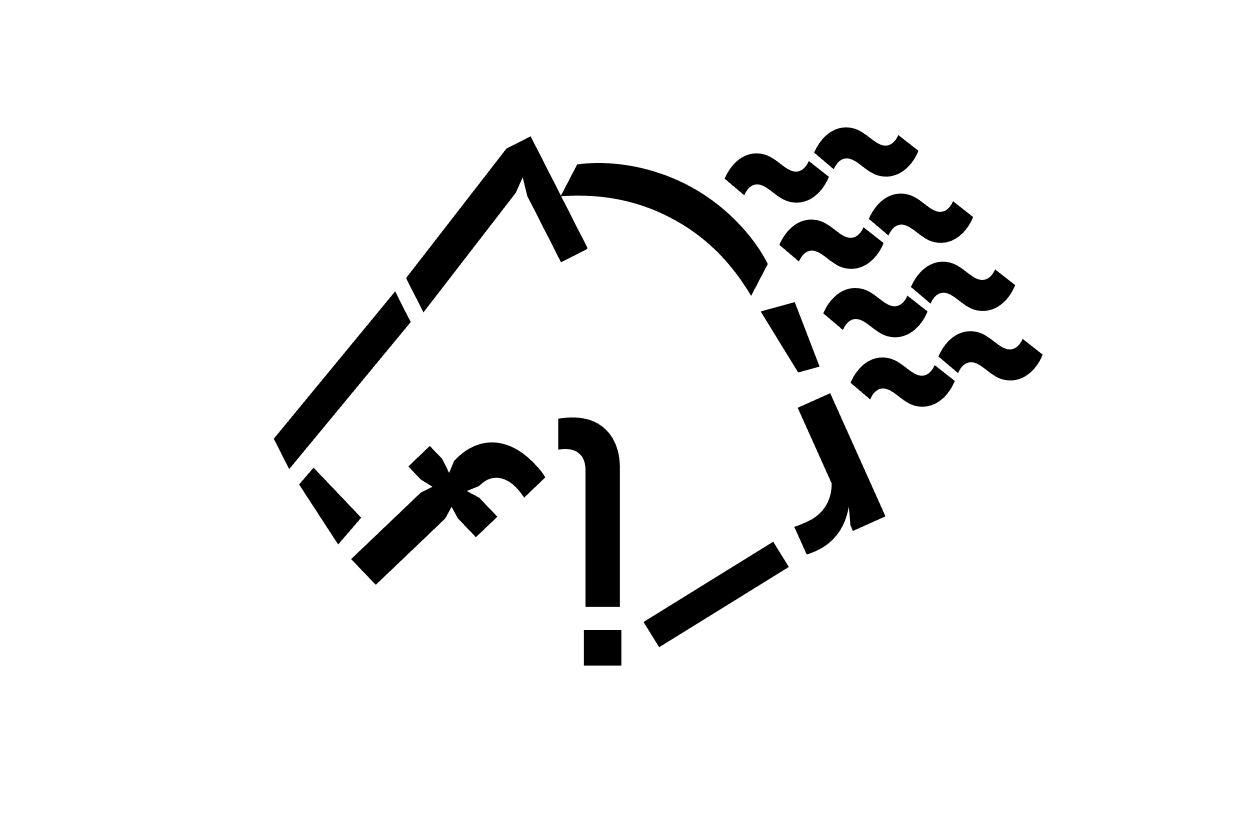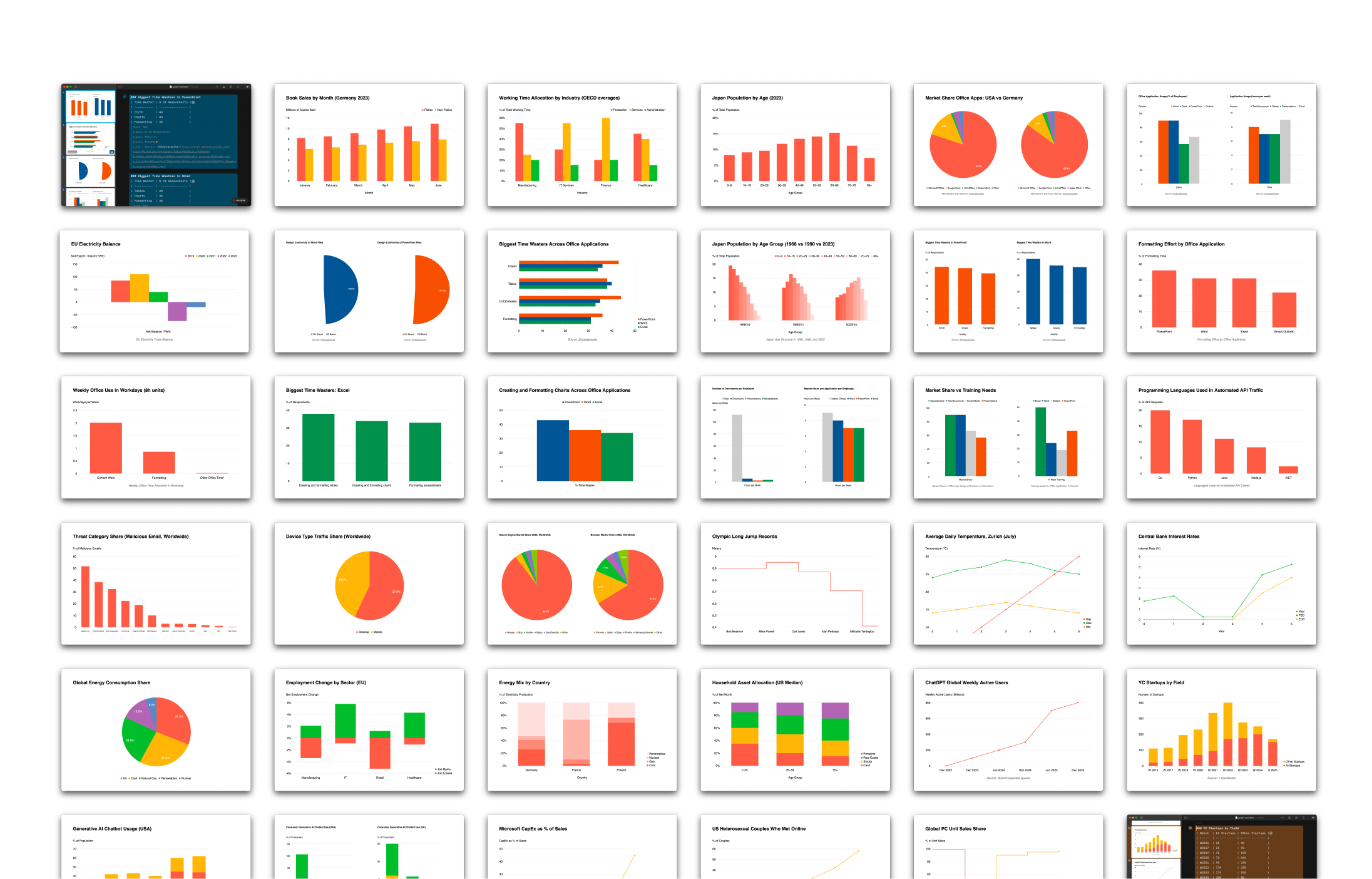Like wildfire, emoji spread from text messages into everything we write. Headlines, list items, email subject lines… Your text is boring? Add an emoji! Trying to increase the response to your newsletter? Add an emoji! Making a list? Add an emoji! Adding emojis always works. Right?
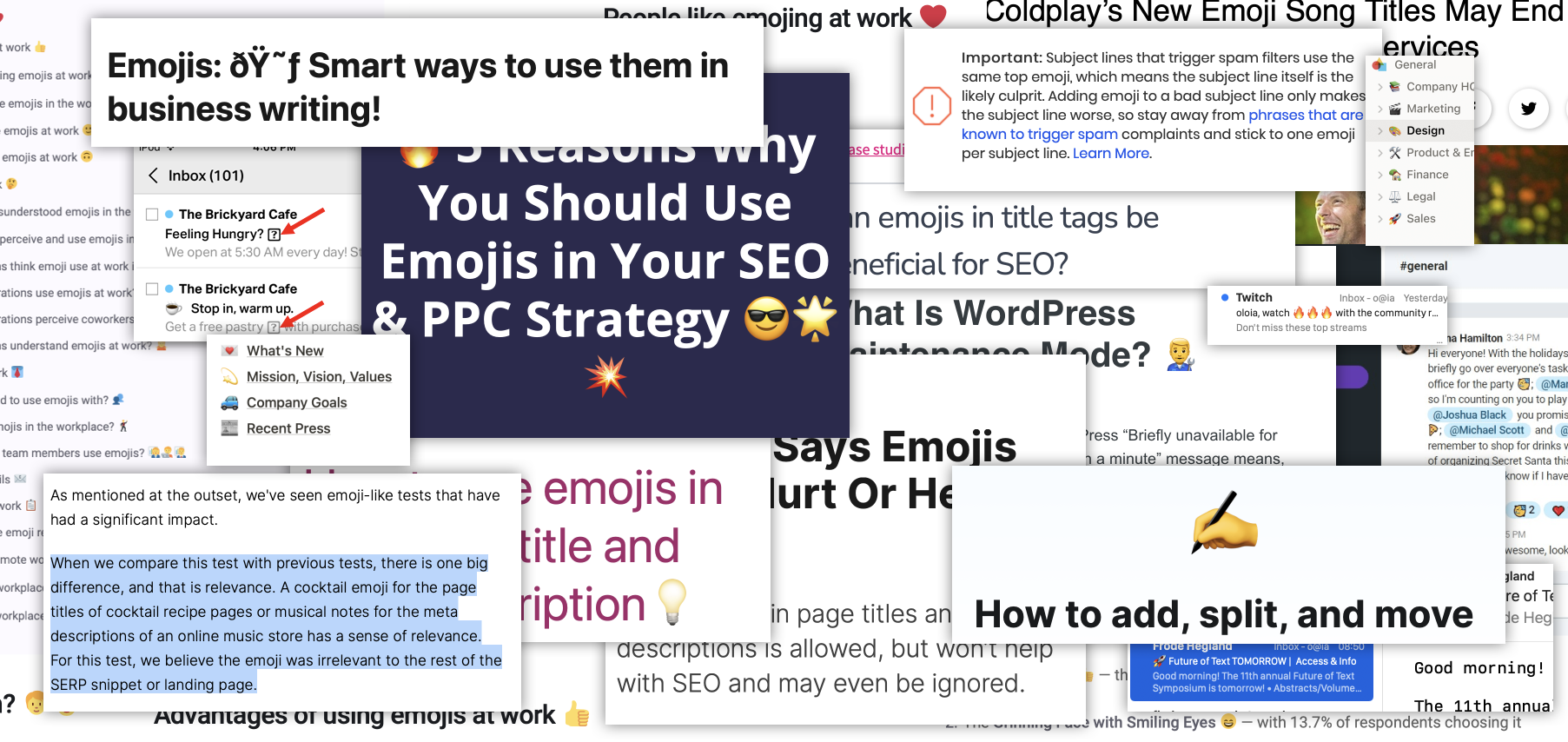
At first glance, emails with emojis look lively. Articles with emoji feel fresh. Lists with emoji read like an invitation to a party. How lively and fresh do you feel after the party? Do headlines with emojis have a measurably better effect than headlines without emojis? Is emoji good for SEO? What are the click-through rates for email subjects with emoji?
Measuring emoji performance
Emoji in emails
Let’s not have an opinion. Let’s be scientific and test it! Many tests have been conducted. And, as is so often the case, A/B tests on emoji use end up with precise uncertainty:
| Average open rate of subject lines | Impact | ||
|---|---|---|---|
| Industry | With emoji | Without emoji | Open rates |
| Health and Fitness | 26.15% | 25.50% | -0.66% |
| Education and Training | 27.05% | 27.39% | +0.34% |
| Consulting | 21.89% | 24.09% | +2.20% |
| E-commerce | 20.01% | 18.42% | -1.58% |
| Media and Publishing | 26.28% | 21.77% | -4.51% |
| Non-Profit | 30.18% | 32.26% | +2.07% |
| Marketing and Advertising | 22.56% | 25.44% | +2.89% |
| Educational institution | 22.99% | 29.29% | +6.30% |
| Blogger | 29.88% | 34.18% | +4.31% |
| Author | 29.31% | 27.53% | -1.79% |
Have you found your category? This list goes on for 40 more lines.1 Check whether emoji in subject lines is beneficial in your industry or not. Then decide if you want to use them. There needs to be more testing to know for sure. Most likely results will vary over time. People get tired of emoji being used to catch their attention everywhere.2 You can question these precise results before that. It’s not so important in what industry you use which emoji. What and how you write is more important than how you decorate it.3
Emoji and SEO
Google largely ignores emojis in its search results. It doesn’t want to pollute its search pages with a circus show of attention-grabbing little images.
That’s why we don’t see so many emoji in search results. That’s good. Thank you, Google, for saving us from an emoji SEO arms race. If you can’t measure it, then psychologists or “neuroscience” must have answers!
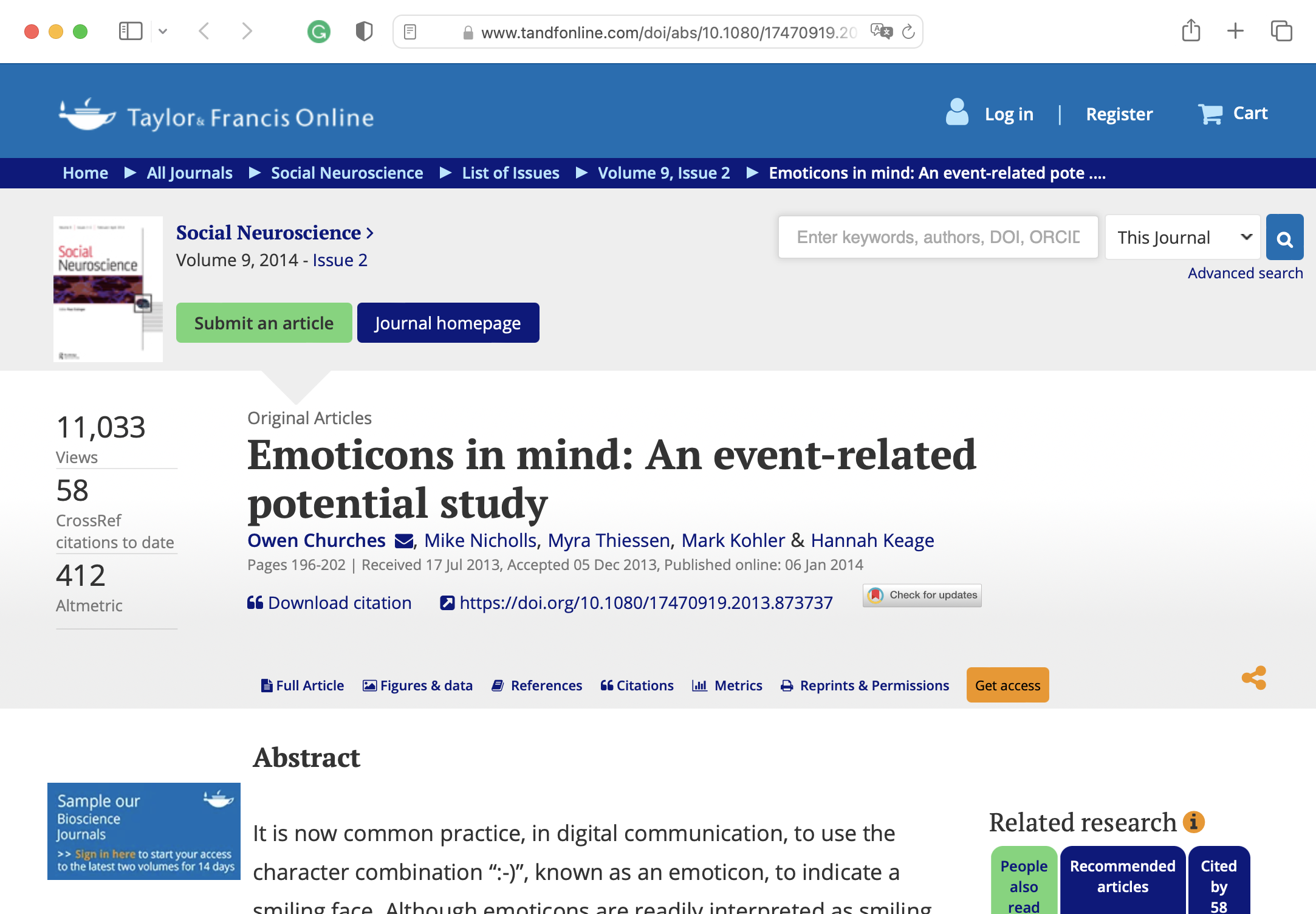
There’s a lot of research on emoji. So far we know that babies don’t recognize emoji and that the meaning of emoji changes over time. This might not be too surprising to you, but at least we know that for sure now. Is there a way other than A/B testing and neuroscience to figure out when and how to use emojis?
Business performance emoji
So, does emoji in email subject lines attract more attention? Or does it make your email look like attention-seeking spam? It depends, of course. You may get 3% more clicks and manage to sneak your emoji newsletter through 95% of spam filters. Beyond the positive statistics, you still risk looking cheap and spammy.
If you do what everyone does, you do not stand out. Design is hard to measure. You can count seconds, clicks, and dollars. Meaning, beauty, love, and trust do not translate well into percentages.
Use common sense with emoji
Emoji conveys emotion. Emotions are difficult to measure. Sure, they can show up as electrical charges in localizable regions of our brains. In theory, we can measure that. Asking people about their feelings has its pitfalls. They might lie to you or themselves. You need to interpret. But interpreting electrical charges in our bodies is not always the safest way to determine what people feel.
Do you use your emoji in a meaningful way, beyond measurability, clickability, usability, and SEO? Or are you just making noise? Most of the time, you can find the answer without Google Analytics, eye trackers, CT, or lie detectors. So, when does emoji make sense?
We already know that emoji is useful for conveying emotion in short messages. There are many ways they can be used beyond that. But in general, an emoji with a face provides emotional context. It clarifies how you mean what you say.
“Are you happy, now?” 😡 “Are you happy, now?” 😐 “Are you happy, now?” 😂
Here, emoji replaces intonation, tone of voice, gestures, and facial expressions. Face emojis, of course, are only a subset. Plenty of emoji characters that do not primarily convey emotions but decoration. In most cases, emojis read like a facial expression. Made at the wrong time and the wrong place they’re simply grimaces.
Design with emoji
Emoji inevitably brings life and color to a page. So does any ornament. As decoration, emoji can embellish a document. Depending on whom you talk to, you can hear opposing ideas. Adolf Loos outright hates it. “Ornament is a crime.” Thoughtfully integrated as meaningful detail, showing care and consideration, the decoration can feel great. Decoration has its place in design. In some ways, it’s inevitable. What type and how much you use is a matter of taste. Of course, you can decorate your communication as you wish and feel. If you want to communicate clearly, you need to limit the noise and focus on the signal.
Emoji as a design element is useful when it communicates more accurately than plain text. Let’s take a look at the main uses of emoji in design:
Emoji as icons
There are many emoji for food, animals, sports, countries, and transportation. Are you writing about cooking, animals, sports, or transportation? Emoji offers a wide range of icons that you can use right away. They look different on different platforms. And they do take a certain bland, overly casual, or childlike visual tone. If you use them in your philosophy almanac, your experimental physics blog, or as icons for a lawyer’s corporate site… Then you reconsider.
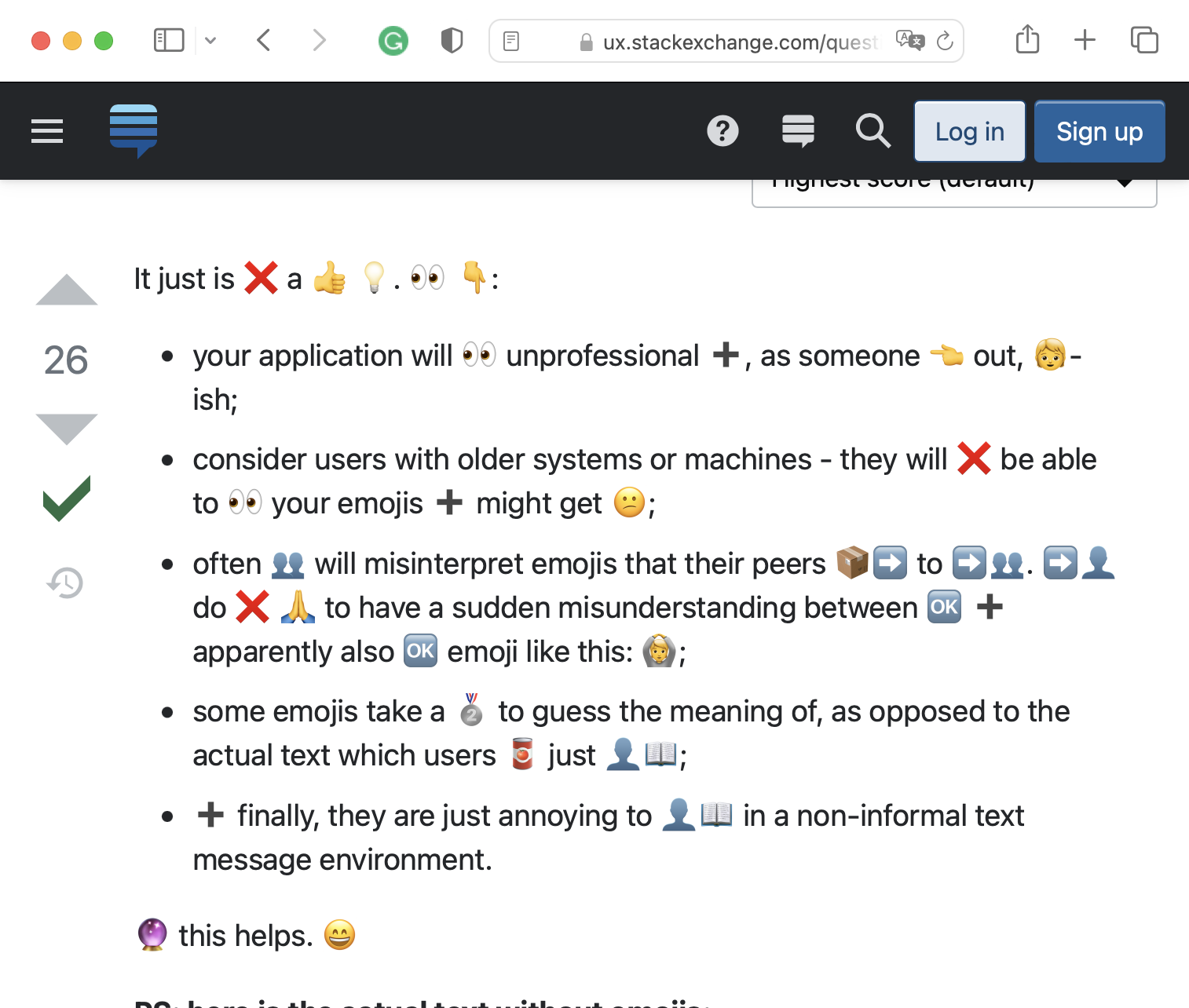

There are only a handful of icons that are understandable by themselves. As a rule of thumb, if you can, use labels with icons. The label does most of the work. It will neutralize the confusion generated by complicated icons. This is why attaching any emoji to a text almost always seems to work, even if it doesn’t make sense.
Emoji as images or in images
Emojis are fun when they create tension between your text and the image they represent. You can use an emoji instead of an image. This is fun and easy if the image is accurate. Emojis are designed to be used in small sizes. Enlarging them to image size might not always look that great. You could also run into copyright issues when you use icons that belong to someone:

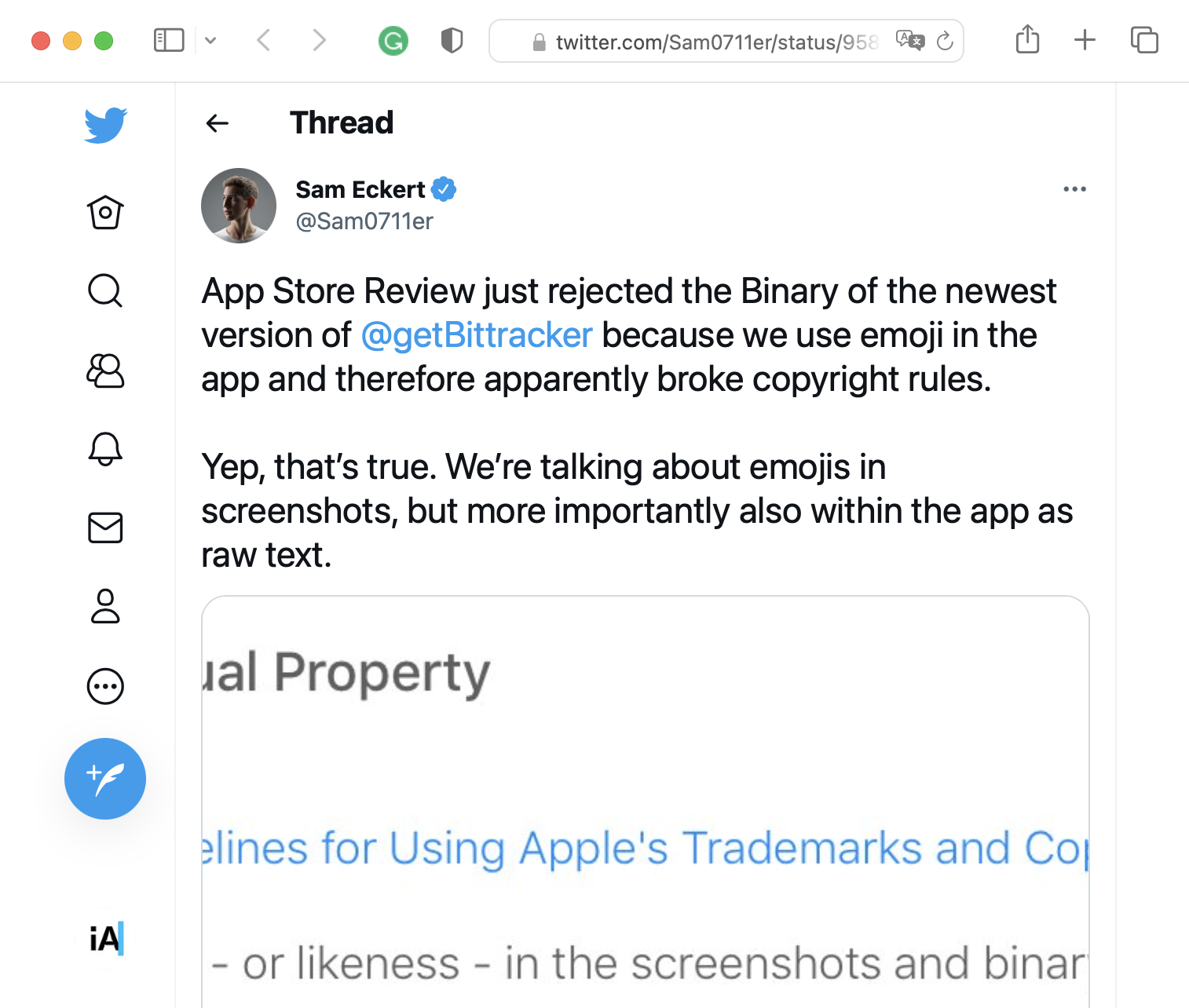
Whether the implementation is original or not depends on how you use it. But you already know that emoji as part of your visual language is unlikely to ever come across as unique or serious. Some social platforms or writing environments encourage emojis everywhere by default. Titles, reactions, lists… As long as you write like this in personal notes or drafts, that’s great. If you publish them with emoji everywhere, your documents will visually blend in with everything written in that style. The more people use emoji, the less original it is.
Replace text with emoji
In personal messages, the emoji is often used as a text replacement. Sometimes directly, as in “Let’s have ☕”, sometimes indirectly, as in: “I am 🍳” (meaning “exhausted”, as in “fried”). Among friends and like-minded people, the same metaphor can be a source of endless pleasure of which one never tires…
Not every word translates into an image. Concrete nouns do well. Replacing verbs with pictures is already difficult. Visualizing abstract words is an Olympic discipline. Your choices within the emoji character set are limited to a somewhat Japanese world, to begin with. So for them to work in any context, at some point, you will have to use them as metaphors. Metaphors are great, but hard. And, please be careful when using these: 🍑🍒👌🍩.
Emoji bullet points
This can be cute, but if there is no matching emoji, it turns into a guessing game. Instead of scanning the list, the eye bounces between list items and emoji.
As mentioned above, added automatically to a list or headline, emoji may easily seem to make sense. The text explains them. It’s the inverse effect that icons without labels have. Look at the big picture though. Do they work in context? Do they trigger a ping-pong match between text and image? Do you now scan emoji instead of the words? Can you really focus on what is being said?
The limits of emoji
You may have gotten used to inserting an emoji before every heading, subheading, or list item. And you may just like it. Unless you just write to kill time, ask yourself as you would with every word and character you type: Is that emoji required? Does it help?
Not every picture is worth a thousand words. A strong headline works better than a weak headline with an emoji. And a strong headline wants to stand by itself. A loud, dark, or meaningless image can oversalt, oversweeten, or dilute. A good soup needs salt and water. But your soup doesn’t get better the more salt or water you pour in.
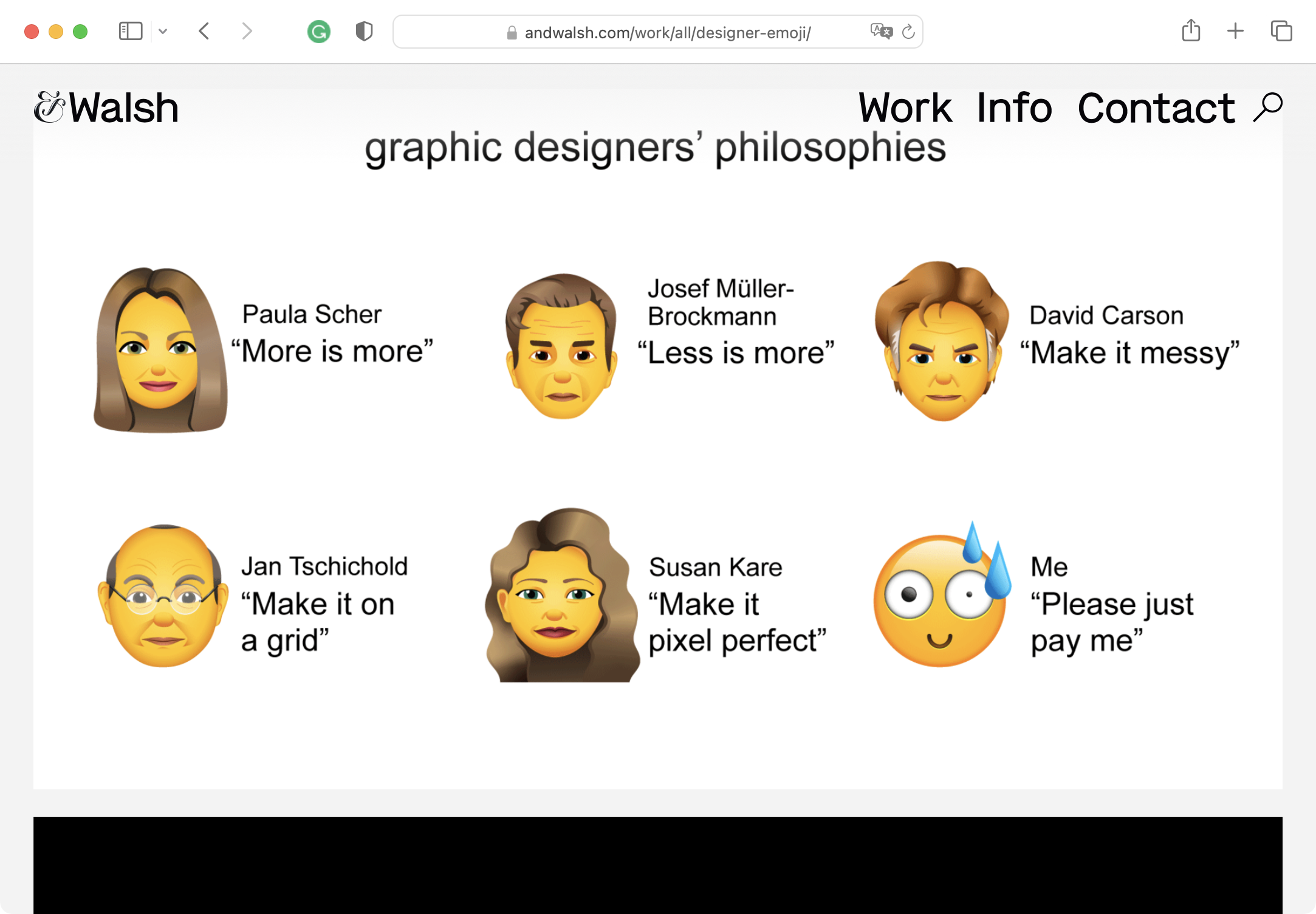
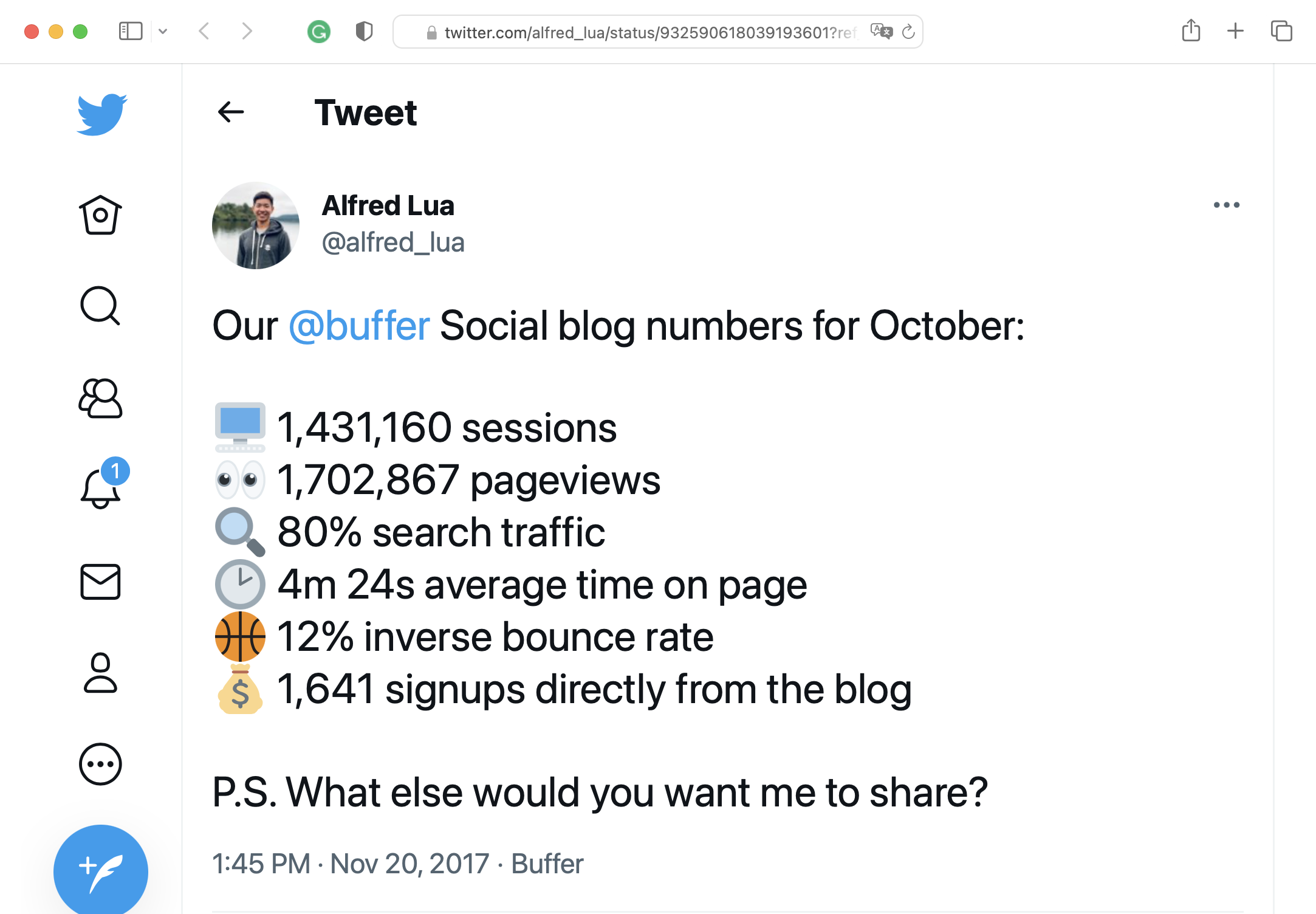
Lazy illustrations can destroy an exciting book. Fuzzy emoji can blur a sharp text. There is a glut of articles, headlines, and lists that come with a default emoji for each group of information. New article – new emoji. New headline – new emoji. New list item – new emoji. Does every block of information need an image?
Maybe you find that every pizza tastes better with a sweet cherry on top. Good for you. You could even be very successful selling it. But you’d have to be a hypnotist to sell that to an Italian.
Emoji and writing skills
As a true emoji master, you may be skilled enough to find an appropriate emoji for every headline, list item, and footnote. Or a future AI bot could do the job for you. In the meantime, shallow algorithms and writers short on time will just randomly add emoji that halfway fit, hoping for poetic effect. At this point, general writing rules come into play:
- Avoid writing what you do not fully understand.
- Avoid emojis if they make things unclear.
- Avoid emojis if they just make noise or complicated jokes.
- Avoid emojis for decoration.
- Avoid adding stuff because it might be meaningful or funny, but you do not know exactly how.
Do not hope the reader will figure out what you haven’t thought through. You are not going to turn a John Johnson into a James Joyce by accident. Avoid vagueness and ambiguity.
Enjoying infinite poetic depth in ambiguity is a sophisticated pleasure that has its place in thought through poetry and high literature. Regular texts work differently.
The general message of emoji is: “Don’t take this too seriously, don’t read too much into it, I’m kind of joking.” Sometimes, that’s exactly what you want. Do you want to communicate that you’re easygoing and fun every time you write a headline or a list item? On a business report? On a scientific paper? On health-related matters? Maybe an emoji does not always improve your message. Sometimes it’s just goofy. You devalue your words if you make grimaces every time you say something.
Finding verbal clarity on a subject of which one had only vague feelings, seeing clearly expressed what was only in the back of one’s mind, is one of the chief pleasures of reading good writing. We read to find clarity with the help of someone else, not to help others to decide what to say. Communicating clearly is hard work.
If your emoji clears up, go for it, if it complicates, don’t.
Conclusion
Adding emojis that make vague jokes about the text they accompany may seem like a fun and easy way to enhance your article, email, or report. The general message of emoji is: “Don’t take this too seriously.” It’s a healthy attitude in chats. But used everywhere you make yourself look willy-nilly.
When used moderately, skillfully, and, in the right place, emoji can indeed make us smile. Spread mechanically and without much thought, to add some color to an otherwise dull text, they just decorate boredom. To create impact you need to care about what you want to say. It’s up to you and how much care you put into every word and image you use.

